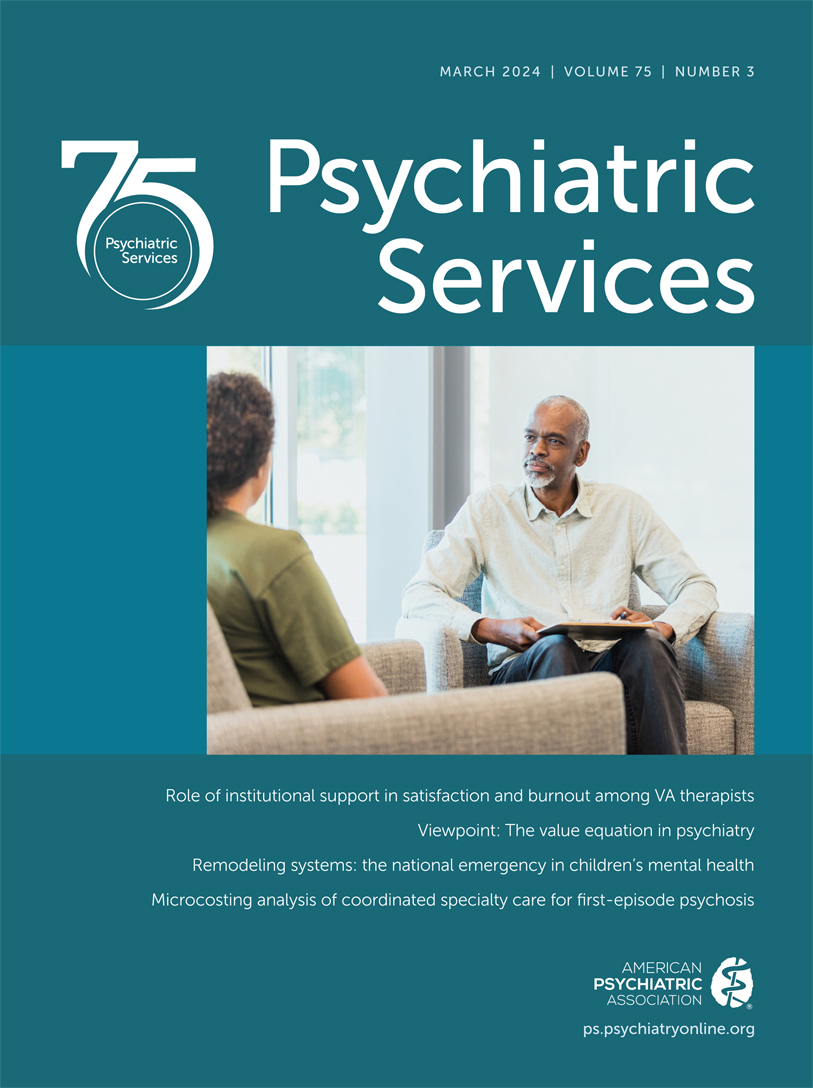A Mixed-Methods Implementation Evaluation of Virtual Reality Job Interview Training in IPS Supported Employment
Abstract
Objective:
Employment rates among individuals with serious mental illness may be improved by engagement in the individual placement and support (IPS) model of supported employment. Results from a recent randomized controlled trial (RCT) indicate that virtual reality job interview training (VR-JIT) improves employment rates among individuals with serious mental illness who have been actively engaged in IPS for at least 90 days. This study reports on an initial implementation evaluation of VR-JIT during the RCT in a community mental health agency.
Methods:
A sequential, complementary mixed-methods design included use of qualitative data to improve understanding of quantitative findings. Thirteen IPS staff trained to lead VR-JIT implementation completed VR-JIT acceptability, appropriateness, and feasibility surveys. Participants randomly assigned to IPS with VR-JIT completed acceptability (N=42) and usability (N=28) surveys after implementation. The authors also conducted five focus groups with IPS staff (N=11) and VR-JIT recipients (N=13) and semistructured interviews with IPS staff (N=9) and VR-JIT recipients (N=4), followed by an integrated analysis process.
Results:
Quantitative results suggest that IPS staff found VR-JIT to be highly acceptable, appropriate for integration with IPS, and feasible for delivery. VR-JIT was highly acceptable to recipients. Qualitative results add important context to the quantitative findings, including benefits of VR-JIT for IPS staff as well as adaptations for delivering technology-based interventions to individuals with serious mental illness.
Conclusions:
These qualitative and quantitative findings are consistent with each other and were influenced by VR-JIT’s adaptability and perceived benefits. Tailoring VR-JIT instruction and delivery to individuals with serious mental illness may help optimize VR-JIT implementation within IPS.
Access content
To read the fulltext, please use one of the options below to sign in or purchase access.- Personal login
- Institutional Login
- Sign in via OpenAthens
- Register for access
-
Please login/register if you wish to pair your device and check access availability.
Not a subscriber?
PsychiatryOnline subscription options offer access to the DSM-5 library, books, journals, CME, and patient resources. This all-in-one virtual library provides psychiatrists and mental health professionals with key resources for diagnosis, treatment, research, and professional development.
Need more help? PsychiatryOnline Customer Service may be reached by emailing [email protected] or by calling 800-368-5777 (in the U.S.) or 703-907-7322 (outside the U.S.).



